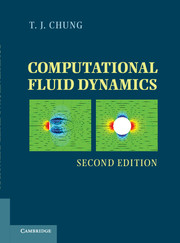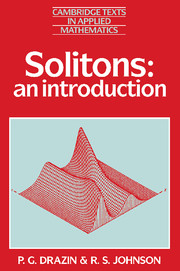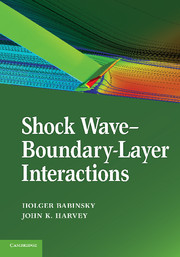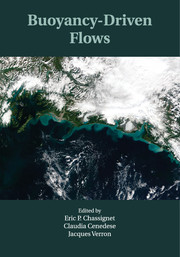3654 results in ebooks in fluid mechanics

Perturbation Methods
-
- Published online:
- 05 June 2012
- Print publication:
- 25 October 1991

Fluid Film Lubrication
-
- Published online:
- 05 June 2012
- Print publication:
- 27 December 2010

Computational Fluid Dynamics
-
- Published online:
- 05 June 2012
- Print publication:
- 27 September 2010

Numerical Weather and Climate Prediction
-
- Published online:
- 05 June 2012
- Print publication:
- 02 December 2010

Solitons
- An Introduction
-
- Published online:
- 05 June 2012
- Print publication:
- 09 February 1989

Shock Wave-Boundary-Layer Interactions
-
- Published online:
- 05 June 2012
- Print publication:
- 12 September 2011

An Introduction to Fluid Dynamics
-
- Published online:
- 05 June 2012
- Print publication:
- 28 February 2000

Buoyancy-Driven Flows
-
- Published online:
- 05 April 2012
- Print publication:
- 05 March 2012
List of Contributors
-
- Book:
- Buoyancy-Driven Flows
- Published online:
- 05 April 2012
- Print publication:
- 05 March 2012, pp vii-viii
-
- Chapter
- Export citation
Frontmatter
-
- Book:
- Buoyancy-Driven Flows
- Published online:
- 05 April 2012
- Print publication:
- 05 March 2012, pp i-iv
-
- Chapter
- Export citation
Contents
-
- Book:
- Buoyancy-Driven Flows
- Published online:
- 05 April 2012
- Print publication:
- 05 March 2012, pp v-vi
-
- Chapter
- Export citation
6 - An ocean climate modeling perspective on buoyancy-driven flows
-
-
- Book:
- Buoyancy-Driven Flows
- Published online:
- 05 April 2012
- Print publication:
- 05 March 2012, pp 240-280
-
- Chapter
- Export citation
Index
-
- Book:
- Buoyancy-Driven Flows
- Published online:
- 05 April 2012
- Print publication:
- 05 March 2012, pp 433-436
-
- Chapter
- Export citation
8 - Atmospheric buoyancy-driven flows
-
-
- Book:
- Buoyancy-Driven Flows
- Published online:
- 05 April 2012
- Print publication:
- 05 March 2012, pp 312-337
-
- Chapter
- Export citation
1 - Gravity currents – theory and laboratory experiments
-
-
- Book:
- Buoyancy-Driven Flows
- Published online:
- 05 April 2012
- Print publication:
- 05 March 2012, pp 13-51
-
- Chapter
- Export citation
2 - Theory of oceanic buoyancy-driven flows
-
-
- Book:
- Buoyancy-Driven Flows
- Published online:
- 05 April 2012
- Print publication:
- 05 March 2012, pp 52-117
-
- Chapter
- Export citation

The Fluid Mechanics of Large Blood Vessels
-
- Published online:
- 05 March 2012
- Print publication:
- 10 April 1980
10 - Gravity flow on steep slope
-
-
- Book:
- Buoyancy-Driven Flows
- Published online:
- 05 April 2012
- Print publication:
- 05 March 2012, pp 372-432
-
- Chapter
- Export citation
9 - Volcanic flows
-
-
- Book:
- Buoyancy-Driven Flows
- Published online:
- 05 April 2012
- Print publication:
- 05 March 2012, pp 338-371
-
- Chapter
- Export citation
7 - Buoyancy-driven currents in eddying ocean models
-
-
- Book:
- Buoyancy-Driven Flows
- Published online:
- 05 April 2012
- Print publication:
- 05 March 2012, pp 281-311
-
- Chapter
- Export citation
